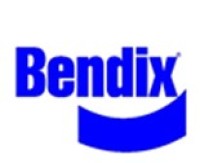Resume Review Checklist
Résumé Review Checklist
√ Have I placed the most important information at the beginning,
emphasizing my experience,education, training, and capabilities to
perform well immediately if hired?
√ Have I used power verbs and descriptive words couched in clean,
edited language?
√ Have I written a brief, specific heading to target my next professional
intention?
√ Is my résumé inviting and uncluttered, using white space where
possible?
√ Does my résumé reflect my strongest qualifications and genuine
motivation for this position?
√ Have I checked carefully for errors in spelling, punctuation, grammar,
and mechanics?
√ Have I included results and accomplishments, supported by
quantitative and qualitative evidence?
√ Have I used industry-specific buzz and key words to indicate my
knowledge?
√ Does my language portray an honest, truthful, and positive image?
√ Have I shown my résumé to a career professional or friend for an
unbiased, objective assessment?
More Résumé Tips To Consider
Now that you have basically completed your résumé, check it carefully and decide on further improvements, additions, and deletions before placing it before the eyes of a prospective hirer. Remember that a résumé serves to mirror you as a potential employee before a job interview will be considered. Therefore, strive to look your best on paper to gain the attention of recruiters by using good judgment and following these tips:
♦ Look for consistency in style, numbering, dates, font, and phrasing in
your résumé, cover letter, and follow-up letters.
♦ Be specific in your heading for your position wanted, rather than
including other related areas.
♦ Avoid tedious laundry lists of responsibilities in your Experience
section; rather, state your notable accomplishments in carrying out these
duties. Indicate how you carried out these duties and assisted in
improving operations by your focused, proactive attitude and
motivation.
♦ Language should illuminate your potential to perform new tasks that
may be assigned through inherent qualifications from previous
experiences and/or education. This may serve to overcome a lack of job
experience and indicate your capacity to train for the position. Establish
a positive persona to help propel you into an initial interview.
♦ Enter a summary of your qualifications stated in confident language to
establish your drive to continue to achieve high standards, a strong
work ethic, and consistent loyalty.
♦ Listed skills should strongly reflect those that are required of a
candidate for the opening you seek. Mention them in the cover letter to
pique the reader’s interest. Stress your job-matching qualifications
as proof of your abilities to perform well immediately if hired.
♦ A one-page résumé is usually best for inexperienced and entry-level
candidates, but if you have years of experience, two or three pages are
expected. Avoid material that is not germane to your targeted résumé.
♦ Use “white space” for ease of reading and an uncluttered appearance.
Your name must appear atop each additional page followed by the page
and telephone numbers. Do not staple your credentials together unless
specifically required.
♦ Insert an approving quotation from a letter of recommendation or
evaluation to promote attention.
♦ Consider using a combination (hybrid) or functional format only if you
should emphasize your evident qualities and achievements rather than
including an irrelevant background in education or former job(s)
imbedded within a lock-step format united by a chronology of events.
♦ Separate your name and address from the rest of the résumé with a
horizontal line. You may use boxing, shading, or graphics to express
your uniqueness and creativity, but employ these sparingly.
♦ Be sure to use the present tense if you are still employed and the past
tense where you no longer work or participate in an organization or
event.
♦ Always use American – not British – spelling, i.e., theater instead of
theatre, and judgmentinstead of judgement, unless sending your
credentials to Great Britain or Canada.
♦ Headings should not be underscored while written in all capitals and/or
in bold lettering.
♦ Establish consistency throughout your documents but avoid repetition
of words and phrases.
Polishing Your Résumé
Always use high quality résumé bond, size 8 ½ x 11 inches, 24 -32 pound weight, having a minimum of 25% cotton content, in a formal shade of white, ivory, off-white, light gray, or light blue. There may be exceptions for creative persons that allow other colors and flamboyant styles. Use only fresh appearing, unwrinkled paper, and carefully store raw paper and finished work flat in a drawer ready for future mailing.
Envelopes, if #10 size, should match your choice of paper. It may be advantageous to use larger size 9 x 12 inch envelopes which allow you to mail your credentials unfolded. The person receiving your mail will likely give it immediate attention.
Your paper may bear a manufacturer’s insignia, or watermark, which should be positioned in a strong light to read the watermark. This is the “correct” side of the paper on which to print your résumé. Although not often examined this way, some recruiters pay attention to such detail.
Only if you are an artist or wish to be employed in a creative field, a somewhat off-beat, lightly imprinted design may be suitable to match your own personality and talents. You may use less formal language and phrasing familiar to those in an industry, but take special care not to offend the reader or appear flippant in your writing.
Be consistent throughout in line spacing, white space, typeface, and use of punctuation, capitalization, boldface, italics, numbering, and bullets to avoid a mixed “salad” of fonts and design choices. Use parallel structure and phrasing, and check for liberal use of an industry’s key terms throughout.
Take care when using abbreviations and buzz words in résumés and cover letters. Spell out streets, hardware, and software. Check for proper hyphenation of word sets because current usage allows many common sets to eliminate hyphens.
Use a serif font if you feel that your résumé is cluttered or difficult to read in low light. Century Schoolbook, Times New Roman, and Courier are three common serif fonts.
Print your final drafts on a laser printer in black lettering, and do not use a copy machine unless it generates clean copies with sharp edges to all printed matter. Artistic/creative job seekers may wish to print in color.
Prepare a neatly written or label-printed address, and include your return address to make an impressive, thoughtful presentation and to avoid having it land in a post office dead letter room.
|
Successful job seekers always apply
diligent planning and meaningful preparation |






.jpg)